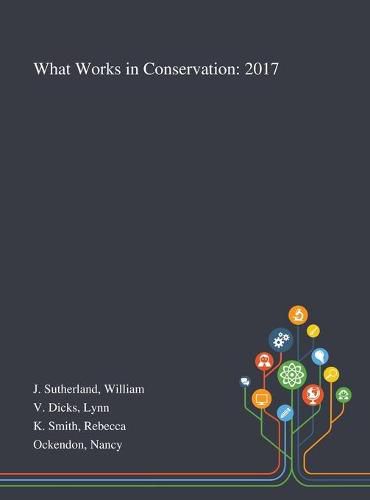Readings Newsletter
Become a Readings Member to make your shopping experience even easier.
Sign in or sign up for free!
You’re not far away from qualifying for FREE standard shipping within Australia
You’ve qualified for FREE standard shipping within Australia
The cart is loading…






This title is printed to order. This book may have been self-published. If so, we cannot guarantee the quality of the content. In the main most books will have gone through the editing process however some may not. We therefore suggest that you be aware of this before ordering this book. If in doubt check either the author or publisher’s details as we are unable to accept any returns unless they are faulty. Please contact us if you have any questions.
Is leaving headlands in fields unsprayed beneficial for wildlife? Is paying farmers to cover the costs of bird conservation measures effective? Is using prescribed fire beneficial for young trees in forests? Does translocating frogs benefit wild populations? Is providing artificial roost structures for bats beneficial? What Works in Conservation has been created to provide practitioners with answers to these and many other questions about practical conservation. This book provides an assessment of the effectiveness of 763 conservation interventions based on summarized scientific evidence. Chapters cover the practical global conservation of amphibians, bats, birds and forests, conservation of European farmland biodiversity and some aspects of enhancing natural pest control, enhancing soil fertility and control of freshwater invasive species. It contains key results from the summarized evidence for each conservation intervention and an assessment of the effectiveness of each by international expert panels. The accompanying website www.conservationevidence.com describes each of the studies individually, and provides full references. This is the second edition of What Works in Conservation, which is revised on an annual basis. It will also available online as a free-to-download PDF at www.conservationevidence.com This work was published by Saint Philip Street Press pursuant to a Creative Commons license permitting commercial use. All rights not granted by the work’s license are retained by the author or authors.
$9.00 standard shipping within Australia
FREE standard shipping within Australia for orders over $100.00
Express & International shipping calculated at checkout
This title is printed to order. This book may have been self-published. If so, we cannot guarantee the quality of the content. In the main most books will have gone through the editing process however some may not. We therefore suggest that you be aware of this before ordering this book. If in doubt check either the author or publisher’s details as we are unable to accept any returns unless they are faulty. Please contact us if you have any questions.
Is leaving headlands in fields unsprayed beneficial for wildlife? Is paying farmers to cover the costs of bird conservation measures effective? Is using prescribed fire beneficial for young trees in forests? Does translocating frogs benefit wild populations? Is providing artificial roost structures for bats beneficial? What Works in Conservation has been created to provide practitioners with answers to these and many other questions about practical conservation. This book provides an assessment of the effectiveness of 763 conservation interventions based on summarized scientific evidence. Chapters cover the practical global conservation of amphibians, bats, birds and forests, conservation of European farmland biodiversity and some aspects of enhancing natural pest control, enhancing soil fertility and control of freshwater invasive species. It contains key results from the summarized evidence for each conservation intervention and an assessment of the effectiveness of each by international expert panels. The accompanying website www.conservationevidence.com describes each of the studies individually, and provides full references. This is the second edition of What Works in Conservation, which is revised on an annual basis. It will also available online as a free-to-download PDF at www.conservationevidence.com This work was published by Saint Philip Street Press pursuant to a Creative Commons license permitting commercial use. All rights not granted by the work’s license are retained by the author or authors.